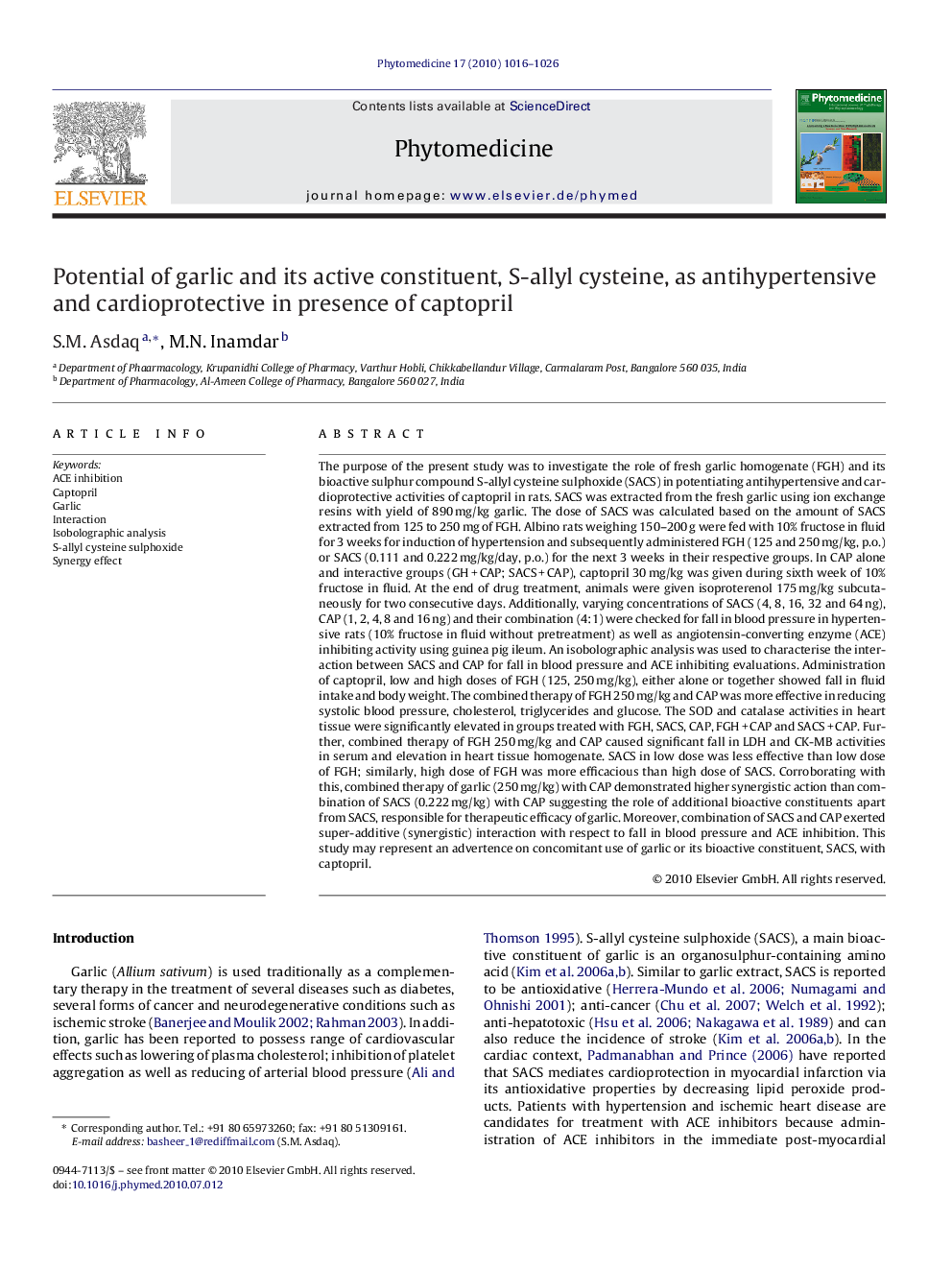| Article ID | Journal | Published Year | Pages | File Type |
|---|---|---|---|---|
| 2497131 | Phytomedicine | 2010 | 11 Pages |
The purpose of the present study was to investigate the role of fresh garlic homogenate (FGH) and its bioactive sulphur compound S-allyl cysteine sulphoxide (SACS) in potentiating antihypertensive and cardioprotective activities of captopril in rats. SACS was extracted from the fresh garlic using ion exchange resins with yield of 890 mg/kg garlic. The dose of SACS was calculated based on the amount of SACS extracted from 125 to 250 mg of FGH. Albino rats weighing 150–200 g were fed with 10% fructose in fluid for 3 weeks for induction of hypertension and subsequently administered FGH (125 and 250 mg/kg, p.o.) or SACS (0.111 and 0.222 mg/kg/day, p.o.) for the next 3 weeks in their respective groups. In CAP alone and interactive groups (GH + CAP; SACS + CAP), captopril 30 mg/kg was given during sixth week of 10% fructose in fluid. At the end of drug treatment, animals were given isoproterenol 175 mg/kg subcutaneously for two consecutive days. Additionally, varying concentrations of SACS (4, 8, 16, 32 and 64 ng), CAP (1, 2, 4, 8 and 16 ng) and their combination (4:1) were checked for fall in blood pressure in hypertensive rats (10% fructose in fluid without pretreatment) as well as angiotensin-converting enzyme (ACE) inhibiting activity using guinea pig ileum. An isobolographic analysis was used to characterise the interaction between SACS and CAP for fall in blood pressure and ACE inhibiting evaluations. Administration of captopril, low and high doses of FGH (125, 250 mg/kg), either alone or together showed fall in fluid intake and body weight. The combined therapy of FGH 250 mg/kg and CAP was more effective in reducing systolic blood pressure, cholesterol, triglycerides and glucose. The SOD and catalase activities in heart tissue were significantly elevated in groups treated with FGH, SACS, CAP, FGH + CAP and SACS + CAP. Further, combined therapy of FGH 250 mg/kg and CAP caused significant fall in LDH and CK-MB activities in serum and elevation in heart tissue homogenate. SACS in low dose was less effective than low dose of FGH; similarly, high dose of FGH was more efficacious than high dose of SACS. Corroborating with this, combined therapy of garlic (250 mg/kg) with CAP demonstrated higher synergistic action than combination of SACS (0.222 mg/kg) with CAP suggesting the role of additional bioactive constituents apart from SACS, responsible for therapeutic efficacy of garlic. Moreover, combination of SACS and CAP exerted super-additive (synergistic) interaction with respect to fall in blood pressure and ACE inhibition. This study may represent an advertence on concomitant use of garlic or its bioactive constituent, SACS, with captopril.
